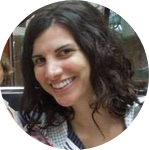About This Project
Sleep is beneficial for memory formation. Consequently, those with poor sleep quality (e.g., older adults) also have increased forgetfulness. We plan to see whether improving sleep quality using a known mechanism -- mild skin warming -- will improve memory formation in adults. Enhancing sleep by natural means can enhance memory formation, and, in effect, can impact the lives of countless older adults who suffer from memory deficits.
Ask the Scientists
Join The DiscussionWhat is the context of this research?
Information learned while awake is transferred from short-term to long-term memory during sleep. The Slow Wave Sleep (SWS) stage is particularly important for memory formation, as it initiates brain synchronicity that enhances plasticity and information transfer.
Unfortunately, with aging comes a characteristic shortening of SWS. It is therefore assumed that age-related changes in sleep contribute to age-related memory deficits.
Early sleep studies consistently found that a simple mechanism -- skin warming -- can induce longer sleep and greater amounts of SWS in both younger and older adults. In fact, skin must only be warmed by about .5 degrees F to have beneficial effects on sleep. If sleep is improved using this mechanism, memory formation should be improve as well.
What is the significance of this project?
There are very few ways to behaviorally improve sleep quality. Age-related sleep deficits are often the product of physiological changes, and therefore most sleep enhancers are pharmacological (e.g., sleeping pills). Unfortunately, these sleep enhancers do not provide a "natural" night of sleep, meaning sleep stage proportions are not ideal for the overnight formation of memories.
It follows, then, that a non-pharmacological sleep enhancer is needed. The proposed project utilizes a harmless and simple mechanism to improve sleep, and we feel it is a promising option for relieving older adults of sleep burdens and consequential deficits in sleep-dependent memory formation.
What are the goals of the project?
Our goal is to create an experiment where memory formation is compared after a deepened night of sleep (via mild skin warming) to a night without warmed skin.We hypothesize that enhanced sleep will induce enhanced memory formation. __________________________________________
Here is some great literature on this topic:
Sleep studies: Raymann, et al., 2005; Raymann, et al., 2007; Raymann, et al., 2008; Fronczek et al., 2008a, Fronczek et al., 2008b
Non-sleep studies: Minson et al., 2002; Shibaski et al., 2002; Kanosue et al., 2002; Pierzga et al., 2003; Jackson et al., 2003; Kamijo et al., 2003; Low et al., 2007; Kenny & Jay, 2007; Hodges et al., 2009
Budget
How do we plan to warm skin? Experimental skin temperature manipulation requires quick and efficient temperature regulation. The best to warm skin in a controlled manner is through a water-infused garment.
Our current funding allows for the purchase of one suit, with which we will pilot the experiment on young, small adults. Given that we ultimately intend to include a range of populations (e.g., older adults), we will need a larger suit.
Funds provided by experiment.com donors will enable us to purchase an additional suit and to test the clinical capabilities of this sleep-enhancing technology.
Meet the Team
Team Bio
My friends know way too much about sleep...thanks to me. If you ask them to describe me, they might admit that I'm a little obsessed with my research. I take it as a compliment.
Three questions drive me and drive my work:
1. When you sleep, everything you did during the day is repeated in your brain -- sometimes in the same order and at the same speed, and sometimes not -- which likely plays into sleep-dependent memory formation. What are the underlying mechanisms?
2. Recovery naps may be different from habitual naps. One may be damaging, and the other may be beneficial. How and why?
3. Morningness/eveningness tendencies may rely on differing sensitivity thresholds to sleep pressure. What determines this threshold?Help me answer question #1...!
Additional Information

What's going on here?
Each subject will be equipped with water-circulating suit so that we can precisely control skin temperature. You're looking at the set up used to induce skin warming:
- Three temperature leads (bottom left) are measuring skin temperature in real-time
- A forehead lead (top right) is estimating core temperature via extrapolation
- A water circulating bath (bottom right) is heating and maintaining water temperature before circulating it through tubes in the suit
- A portable sleep recording device (top left) is monitoring sleep quality and sleep stages.
Project Backers
- 10Backers
- 107%Funded
- $1,072Total Donations
- $107.23Average Donation
